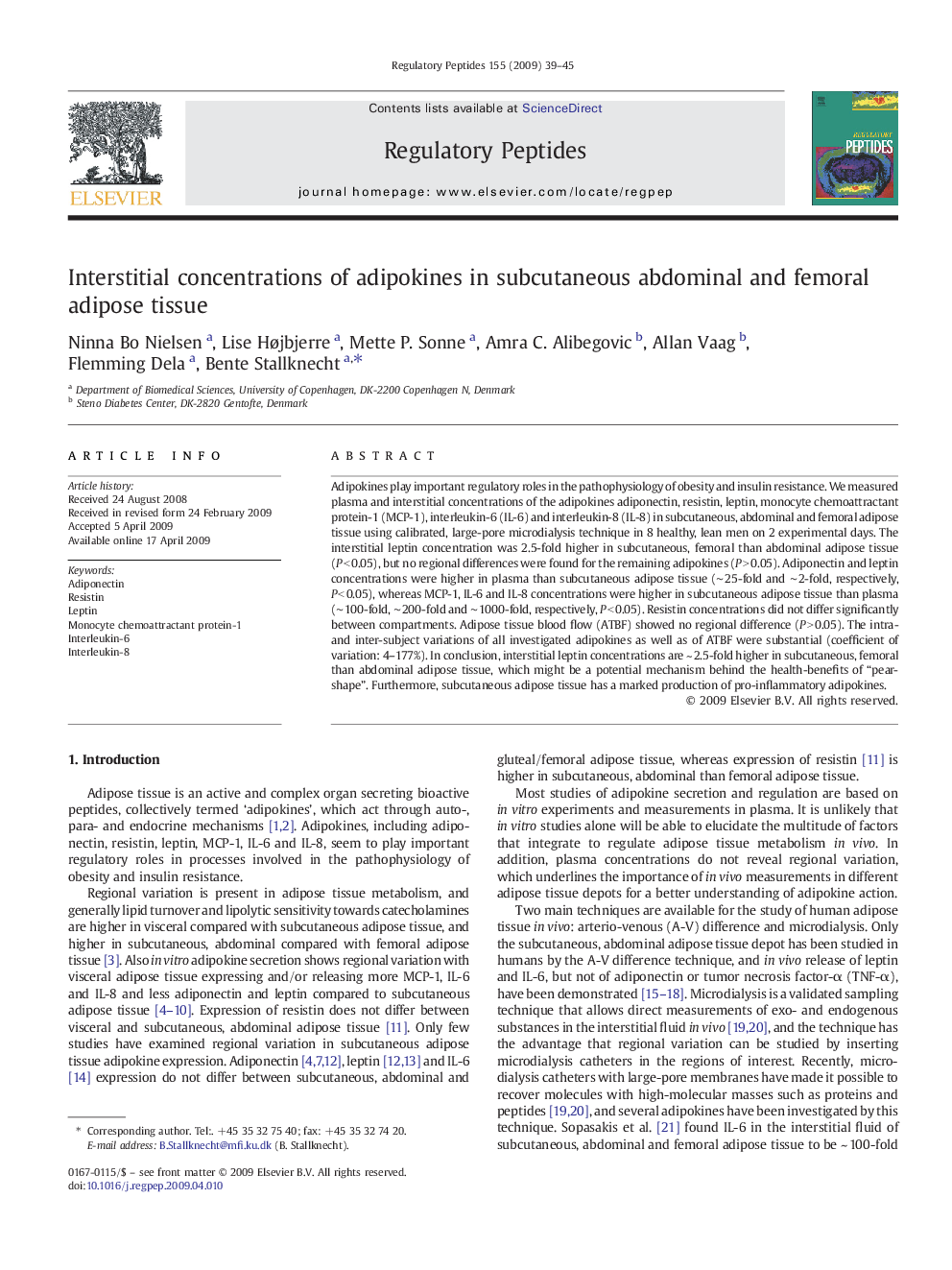| Article ID | Journal | Published Year | Pages | File Type |
|---|---|---|---|---|
| 2023088 | Regulatory Peptides | 2009 | 7 Pages |
Adipokines play important regulatory roles in the pathophysiology of obesity and insulin resistance. We measured plasma and interstitial concentrations of the adipokines adiponectin, resistin, leptin, monocyte chemoattractant protein-1 (MCP-1), interleukin-6 (IL-6) and interleukin-8 (IL-8) in subcutaneous, abdominal and femoral adipose tissue using calibrated, large-pore microdialysis technique in 8 healthy, lean men on 2 experimental days. The interstitial leptin concentration was 2.5-fold higher in subcutaneous, femoral than abdominal adipose tissue (P < 0.05), but no regional differences were found for the remaining adipokines (P > 0.05). Adiponectin and leptin concentrations were higher in plasma than subcutaneous adipose tissue (∼ 25-fold and ∼ 2-fold, respectively, P < 0.05), whereas MCP-1, IL-6 and IL-8 concentrations were higher in subcutaneous adipose tissue than plasma (∼ 100-fold, ∼ 200-fold and ∼ 1000-fold, respectively, P < 0.05). Resistin concentrations did not differ significantly between compartments. Adipose tissue blood flow (ATBF) showed no regional difference (P > 0.05). The intra- and inter-subject variations of all investigated adipokines as well as of ATBF were substantial (coefficient of variation: 4–177%). In conclusion, interstitial leptin concentrations are ~ 2.5-fold higher in subcutaneous, femoral than abdominal adipose tissue, which might be a potential mechanism behind the health-benefits of “pear-shape”. Furthermore, subcutaneous adipose tissue has a marked production of pro-inflammatory adipokines.
